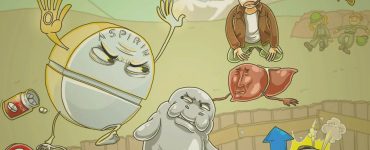From a young age, we’re taught to memorize the alphabet, our home address, multiplication tables, and even the colors of the rainbow. Whether we know it or not, memorizing is a part of our everyday life. We use it in our school and college to pass exams, but memory helps us through our careers.
Still, we all know memorizing and cramming information the night before a big test isn’t the best. When we utilize memorization in the wrong way, we only retain information for the short term. This isn’t great for any kind of student. We need to learn–not just memorize.
What is Memorization?
Memorization is a mental process. When we memorize something, we learn information and then store it in our memory to recall at a later time.
Memorizing gets harder as we get older, but our brain goes through a four-step process to memorize.
- Encoding: During encoding, our brains process the information and categorize it for short-term or long-term memory storage and retrieval. Encoding can process visual, auditory, or sensory information.
- Consolidation: Once we encode, we consolidate. Our brains pick the most important information from our short-term memory to transfer to long-term memory.
- Storage: Then, the brain stores the information where it needs to be. Memories are stored throughout several parts of the brain. However, most of our short-term memory is stored in the brain’s pre-frontal cortex, and the hippocampus is crucial for long-term memories.
- Retrieval: Let’s go get those memories! Memory retrieval gathers the relevant information from where it was previously stored. There are three types of recall. Free recall lets us remember the information at will, cued recall is when we remember information with the help of cues, and serial recall is when we remember events in chronological order.
Memorizing is good for taking tests or taking a trip down memory lane, but memorizing information is different than truly understanding it.
What is Comprehension? Otherwise Known as Comprehending to Understand
Comprehension is typically related to learning concepts. It’s meaningful learning that lets us form connections between new and previously learned information. When we learn new information about certain subjects, we can develop an accumulated comprehension of them.
Comprehension is how we use the information we memorize (and if we use it effectively). If we can apply learned information to solving hypothetical scenarios and real-life problems, it means we have truly understood the information.
How Are Memorizing and Understanding Different?
Recalling memorized information is only useful if you know how to use it. Memorization doesn’t mean you really comprehend the subject matter.
If you recall something but can’t remember what it’s used for, then you only learned it at the surface level. For example, if you remember a formula by heart but can’t identify when to use the formula, it’s essentially useless.
The Benefits of Understanding/Comprehending vs Memorizing
Understanding a subject or topic helps us make inferences, problem-solve, and apply ourselves to complex tasks. When we dedicate time to understanding a subject, we engage in deep learning and build information and concepts for future use. Understanding will let you describe something in your own words–and even teach it to others to help them understand the subject.
On the other hand, memorizing helps us recall important information at a specific given time. If you have an important test or task to perform, you’re likely going to use your memory for it. However, memorization isn’t always long-term. When we cram to memorize for a test, we only remember the subjects for the short term. Your brain can throw away important information you need for future courses and exams which is why quick memorization isn’t always the way to go.
Although, memorization can eventually lead to understanding. Having a set of memorized formulas, abbreviations, acronyms, steps, facts, and more allows us to take that step towards comprehension. If you dedicate yourself to the subject matter, memorize it, and apply it to real-world concepts, well, practice makes perfect! You’ll be able to recall information and use it effectively in your everyday life, career, or school.
5 Tips for Learning and Comprehending Effectively
Now, what about studying smarter, not harder? The truth is learning and memorization can easily co-exist. Memorization can alleviate study sessions, making your exam week just a tad bit less stressful. However, the goal is to turn what you learn into long-term memory for real comprehension.
Here are some tips on how you can study to learn, not just memorize.
Tip 1: Diagrams: You may be saying to yourself, “Really? A diagram?” But, hear us out. Diagrams help you create and then witness the relationships between concepts and ideas. It’s a visual step-by-step process that can be creative. It engages your brain to think logically and comprehend the idea as it relates to what you’re learning.
Tip 2: Group learning: You learn with a handful of peers in your classroom, but you’re not always engaging in discussion about the subject. Create a study group beyond the classroom and have study sessions for productive discussion. As everyone verbalizes the information, you’ll get to hear some valuable insights. When you bounce ideas off one another, learning just happens.
Tip 3: See it: Visualizing is one of the best things you can do to learn. Whether you use your imagination or see pictures in your textbook, images activate your brain. Once you associate an image with a concept, it’s going to be hard to forget. Picture mnemonics can help you memorize, comprehend, and retain what you need to know. An example of effective visual learning is Picmonic, a research-proven study tool that utilizes pictures to help all kinds of medical students learn and recall complex subjects.
Tip 4: Teach it: Put the concept into your own words. Say it out loud or write it down. Then, use examples from your own experiences or find some online to relate them to. This helps you learn on your terms, and eventually, you’ll be able to talk about it like you’re the expert–not your textbook.
Tip 5: Find relationships: Interlinking information to something you’ve previously learned can help you understand concepts. It doesn’t have to be exactly the same, but finding one thing in common helps your brain clean up the information. This is related to schema theory, a pattern of thought that organizes information and creates relationships among them.
Get to Learning
Whether you have a test tomorrow or are starting an important course, you can begin implementing these comprehension tips in your study routine. There are several study tools and resources out there, but creating a study approach and timeline will ensure you’re understanding information for the long term. Now…get to learning so you can be the best student and healthcare professional you can be!
Download our mobile app and take Picmonic on the go!















